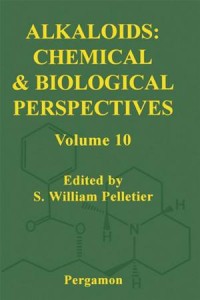Volume 10 of this series presents four timely reviews. Chapter 1 provides a fascinating account of the history of alkaloid discovery in Australia beginning with the isolation of the first alkaloid from an Australian plant, the Tasmanian sassafras (Atherosperma moschatum), by Zeyer in 1861. Also included is a comprehensive survey of alkaloid-bearing plants, and a section dealing with detection, estimation, extraction, and work-up procedures for alkaloids.Chapter 2 provides a comprehensive update to the chapter on "Pyridine and Piperidine Alkaloids" which appeared in volume 3 of this series. The focus of this chapter is on new alkaloids isolated, biosynthesis, and biological properties.Chapter 3 looks at "3-Alkylpiperidine Alkaloids Isolated from Marine Sponges in the Order Haplosclerida". Studies over the past thirty years have shown that sponges are a rich source of alkaloids. Many of these sponge alkaloids are related to each other by the presence of a 3-alkylpiperidine moiety in their structures and it happens that the sponges that have been reported to contain 3-alkylpiperidine alkaloids are all in the order Haplosclerida.Chapter 4 reviews -carboline and isoquinoline alkaloids which are pharmacologically some of the most significant marine natural products. This chapter treats the isolation, structure elucidation, synthesis, biosynthesis, and pharmacological activity of these alkaloids.
Alkaloids: chemical and biological perspectives,
Sobre
Talvez você seja redirecionado para outro site












